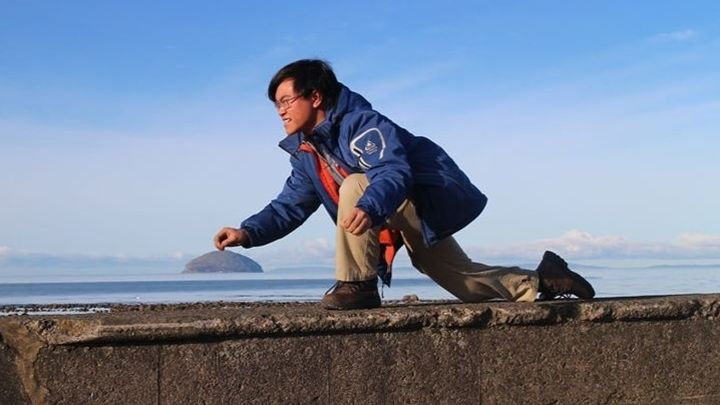
Research MSc on Curling Stones in Edinburgh
Donation protected
Curling stones only come from two places in the world. But what makes them so special? Continue reading to find out more...
 I have made a limited number of appreciation gifts for donations, and these gifts showcase some of my diverse hobbies. Here is a list of gifts (and minimum donation in CAD):
I have made a limited number of appreciation gifts for donations, and these gifts showcase some of my diverse hobbies. Here is a list of gifts (and minimum donation in CAD):1. Handmade curling stone magnetic pin made from polymer clay ($30 + shipping)
2. Set of four 8" x 12" thin section photomicrographs of curling stones ($30, free shipping within Canada)
3. Laser-engraved, curling-themed maple cheeseboard ($50 + shipping); designs include curling house and curling "cheese"
4. Handmade curling stone magnetic pin made from curling stone ($50 + shipping)
5. Handmade commemorative ring made from Ailsa Craig Blue Hone curling stone ($80 + shipping)
6. Large laser-engraved maple cheeseboard ($80 + shipping); designs include curling house and periodic table
7. A display set of 30 3D-printed crystallographic models ($250 + shipping)
8. A display set of four handmade commemorative rings made from different curling stone types ($300 + shipping)
... and more to come!
Curling is an Olympic winter sport where athletes slide cylindrical stones across an ice sheet, and these stones deviate ("curl") off their intended trajectory. But why do I care about curling stones, and why should you? Curling stones only come from two places in the world: Ailsa Craig, Scotland (the island pictured above, which doubles as a bird sanctuary) and Trefor, Wales. In popular media, we are told that the rocks from Ailsa Craig and Trefor are one-of-a-kind — but what makes them so special? Aren't they just granite?
Curling rocks collide with one another at their sides (the "striking band"). Curling stones are expensive — about $800 CAD per rock, or $100,000 CAD for a facility with 8 lanes or "sheets" — so the best granite must be selected to maximize the lifespan of the stones. Over the years, people have tried (and failed) to find alternate sources for curling stones. Did you know? The only two scientific studies of curling stones occurred in 1890 and 1951 (with some more data published in 2001)!
I'm a competitive curler and a geology student, and since September 2019, I have been pursuing a Research Master's degree at the University of Edinburgh (Edinburgh, UK) on understanding the damage evolution of curling stones. This project is a continuation of my undergraduate thesis on the mineralogy of curling stones (at Laurentian University, in Sudbury, Canada). Scotland is the birthplace of curling, and there's also an ongoing research project at the University of Edinburgh on catastrophic failure in rocks (to better understand earthquakes), so Edinburgh is the best place in the world to continue my research. However, my tuition cost alone is £27,600 (~$45,000 CAD) and I will also have to pay for my living expenses and any extra research costs. The total cost of my project including research will be ~$100,000 CAD. Combining my two passions is a dream come true, but I need your help!
There are three parts to my project. First, I will analyze striking bands at different ages/damage states to understand how the microstructure of a rock affects striking bands. Second, I will conduct a series of on-ice experiments to better understand the stresses and forces of curling stone impacts. Third, I will conduct damage tests (simulating curling stone impacts) and image this in real time using 4D synchrotron microtomography (it's like taking a series of CAT scans over time). This will allow us to better understand what makes curling stones so unique.
Please contact me to find out more!
Cheers!
Derek (AKA D-rock)
Organizer
Derek Leung
Organizer
North York, ON